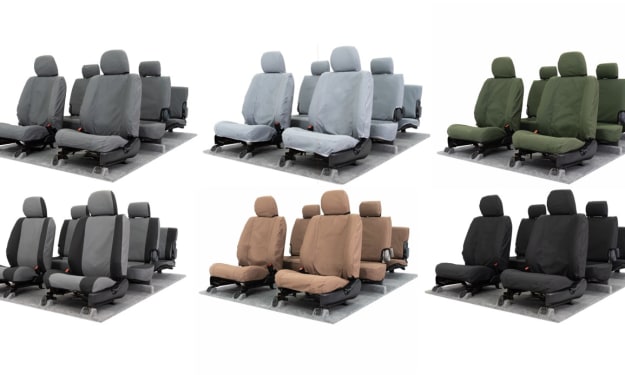Housing Your Stepper Motor: The Importance of Electronic Enclosures
Stepper motors are a type of electric motor that converts digital pulses into rotational motion. They are widely used in a variety of applications, including robotics, automation, manufacturing, and medical equipment.

Stepper motors are precision instruments that are used in a wide range of industrial and commercial applications. They require careful handling and protection to ensure reliable performance and longevity. Electronic casings provide a vital layer of protection for motors, shielding them from environmental factors like moisture, dust, and temperature fluctuations.
In this article, we'll explore the importance of electronic enclosures, and provide some tips for choosing the right enclosure to suit your specific needs. Whether you're a hobbyist or a professional engineer, understanding the role of enclosures can help ensure that your motor operates reliably and consistently over time.
What are Stepper Motors?
Stepper motors are a type of electric motor that converts digital pulses into rotational motion. They are widely used in a variety of applications, including robotics, automation, manufacturing, and medical equipment.
Unlike other types of electric motors, which rely on continuous motion, these motors operate in discrete steps. This makes them ideal for applications where precise control is required, such as positioning systems or CNC machines. They are also known for their high torque output and low vibration levels.
Components of a Stepper Motor
These motors consist of several components, including a rotor, a stator, and a series of electromagnetic coils. The rotor is the moving part of the motor, while the stator is the stationary part. The electromagnetic coils are arranged around the stator and are energised in a specific sequence to produce the desired motion.
Types of Stepper Motor
There are several types of stepper motors, including permanent magnet, hybrid, and variable reluctance. A permanent magnet motor uses a permanent magnet in the rotor and a stator with electromagnetic coils. A hybrid motor combines the features of permanent magnet and variable reluctance motors, while a variable reluctance stepper motor relies on the magnetic attraction between the rotor and stator to produce motion.
Techniques Used in Stepper Motor
Stepper motors can be controlled using a range of techniques, including full-step, half-step, and micro-stepping. Full-step mode involves energising each coil in sequence to produce one full step of motion. Half-step mode involves energising alternate coils to produce a half-step of motion. Microstepping involves energising the coils in smaller increments to produce smoother motion and higher resolution.
Why are Electronic Enclosures Important for Your Stepper Motor?
Electronic enclosures are important for these motors because they provide protection against environmental factors that can impact the motor's performance and longevity. Like all electronic devices, these motors are vulnerable to moisture, dust, and temperature fluctuations, which can cause damage and reduce efficiency.
Enclosures provide a physical barrier around the stepper motor, shielding it from these environmental factors. They can be made from a variety of materials, including plastic, metal, and composites, and can be designed to provide various levels of protection depending on the application.
In addition to protecting the motor from environmental factors, electronic casings also help to reduce electromagnetic interference (EMI) and radio frequency interference (RFI). EMI and RFI can disrupt the operation of the motor, causing erratic or inconsistent performance.
By choosing the right enclosure for your motor, you can help ensure reliable and consistent operation over time. Factors to consider when selecting an electronic protective enclosure include the level of protection needed, the size and shape of the motor, and the operating environment.
Tips to Select the Right Enclosure for Your Motor
Here are some tips to help you select the right enclosure for your motor:
- Consider the environment: The first step in selecting an enclosure for your motor is to assess the environment it will be used in. This includes factors such as temperature, humidity, dust, and other potential hazards that could impact the motor's performance. Choose an enclosure that offers the appropriate level of protection for the environment.
- Check the size and shape: Enclosures come in various sizes and shapes, so it is important to choose one that is appropriate for your motor. Make sure to measure the motor accurately and select an enclosure that provides enough space for it to fit comfortably.
- Look for durability: Choose an enclosure that is made from durable materials that can withstand the wear and tear of regular use. This is especially important for motors that will be used in harsh environments or in applications where they will be exposed to vibration or impact.
- Consider the mounting options: Make sure to choose an enclosure that has suitable mounting options for your motor. Some enclosures are designed to be mounted on walls or other structures, while others can be attached directly to the motor itself.
- Check for ventilation: Motors generate heat during operation, so it is important to choose a casing that provides adequate ventilation to prevent overheating. Look for enclosures that have vents or other cooling features to help dissipate heat.
- Check for compatibility with accessories: If you plan to use accessories such as connectors, switches, or sensors with your motor, make sure to choose a protective enclosure that is compatible with these components.
By following these tips, you can select the right enclosure for your motor and help ensure reliable performance over time.
About the Creator
Amara Gomez
I am skilled in go-to-market strategy, product and consumer insights, messaging, demand generation, digital marketing (PPC, SEO, social, email, website, content, etc...) product marketing, customer advocacy, and content development.






Comments
There are no comments for this story
Be the first to respond and start the conversation.